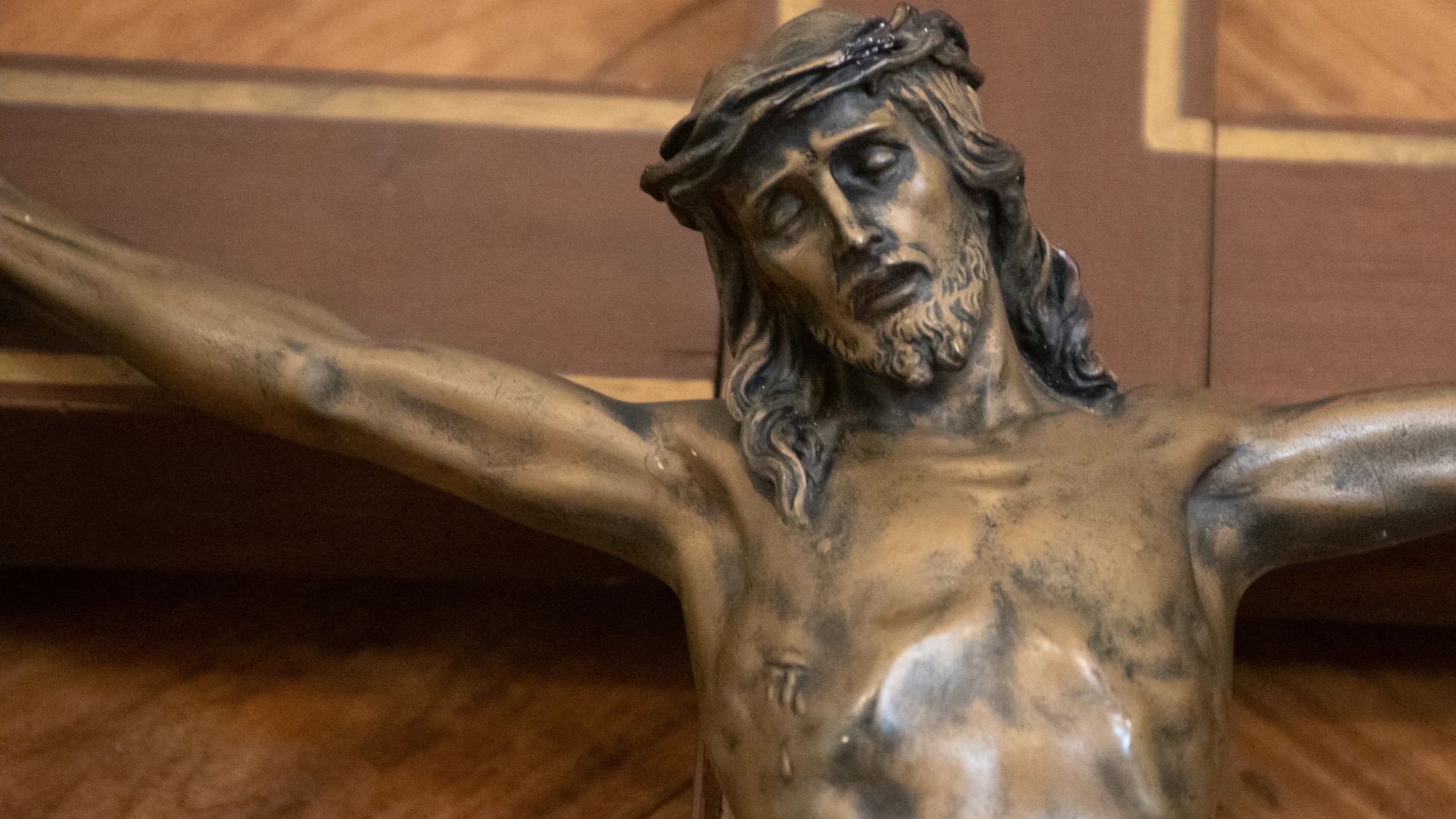
Unveiling the dramatic revelation of God’s love for His children I argue is the first point of religious contact a catechist should unleash to his students. The entire message of the Gospel is two-fold; first it is the proclamation of the Good News of salvation, second it is also a call to repentance-conversion-to turn away from sin and declare your love for Christ and His Church over your sins. In the development of faith; from the point of curiosity or inquiry, to the development of an initial trust in Jesus Christ, and finally an honest acknowledgement that Jesus Christ is the son of God and the way to salvation, the student-seeker should receive an opportunity to actively pursue a relationship with Jesus Christ while at the same time recognize the veils developed over time that prevented the seeker-student from developing a loving relationship with our Lord.
Unveiling God’s Love-The First Step
Religious education environments require two central components: an opportunity to encounter the awe and wonder of Jesus Christ, and second, how to live this awe and wonder through the person of Jesus Christ and His Church. God’s unending love must be associated with the Son and the Church he established. None of these principal elements should be divided or separated as they function under the foundation of the Holy Trinity.
The religion teacher who is simultaneously an evangelist and a catechist I again argue must create an environment where the student begins to understand that he is a child of God and is loved without conditions. Part of this loving scheme is the religion teacher’s authentic witness and embrace of God’s love within his very own life. In the Sermon on the Mount[1], Jesus demonstrates prior to his first kerygmatic-catechetical discourse that the way to salvation begins with an entrance into the Kingdom of Heaven through the first sacrament of Christian initiation-baptism. In baptism, we encounter the first opportunity to orient our lives to God through the Son.
The sacrament of baptism provides the first instance of recognizing the Divine value of making the sign of the cross which provides anyone especially a student with the opportunity to know and understand the significance of this Christian symbol of faith which many have died proclaiming for over two-thousand years.
Unveiling God’s Love-The Second Step
The proclamation of the Gospel is not solely based on human happiness. The content of the kerygma is a message of authentic love and a vow to turn away from sin. Any attempt to unveil the love of God must involve the active opportunity to turn away from the temptations of the Devil and profess a firm purpose of amendment to renounce all evil from one’s life and engage a life with Jesus Christ.
As mentioned previously, the first characteristic of the Gospel is about repentance. The second characteristic is the acceptance of Christ’s message to unveil His word and demonstrate it through an act of faith which begins at baptism. The Catechism of the Catholic Church echoes this formula by reminding us that:
The transmission of the Christian faith consists primarily in proclaiming Jesus Christ in order to lead others to faith in him. From the beginning, the first disciples burned with the desire to proclaim Christ: We cannot but speak of what we have seen and heard. And they invite people of every era to enter into the joy of their communion with Christ.[2]
How do you demonstrate God’s love?
As mentioned earlier with the example of the Sermon on the Mount, the result of the sermon is the demonstration of how to live the law of God through the beatitudes which serve as the first demonstrative example of God’s love. Jesus’ message through the beatitudes is a proclamation to change man’s desires for himself and instead redirect those desires to God through a renunciation of sin, openness to repent of these sins and actively seek to proclaim Christ’s message of love. This entire sequence in St. Matthew’s Gospel is a fulfillment of the Law of God-Ten Commandments[3] as the means to live and share the Good News of Jesus Christ to the whole world.
Proper catechesis is understood as the unveiling of God’s love so that those we encounter especially the student’s we teach may have the opportunity to freely respond to Jesus’ love through an act of faith. This is what every student within a teaching setting should receive; an opportunity to respond to Jesus Christ and develop a desire for eternal life in heaven.
From this loving knowledge of Christ springs the desire to proclaim him, to “evangelize,” and to lead others to the “yes” of faith in Jesus Christ. But at the same time the need to know this faith better makes itself felt.[4]
Because of Jesus’ victory over sin and death, heaven awaits if we freely and lovingly choose this path with Christ. St. Mark reminds us:
On that day, when evening had come, he said to them, “Let us go across to the other side.” And leaving the crowd, they took him with them, just as he was, in the boat. And other boats were with him. And a great storm of wind arose, and the waves beat into the boat, so that the boat was already filling. But he was in the stern, asleep on the cushion; and they woke him and said to him, “Teacher, do you not care if we perish?” And he awoke and rebuked the wind, and said to the sea, “Peace! Be still!” And the wind ceased, and there was a great calm. He said to them, “Why are you afraid? Have you no faith?” And they were filled with awe, and said to one another, “Who then is this, that even wind and sea obey him.[5]






